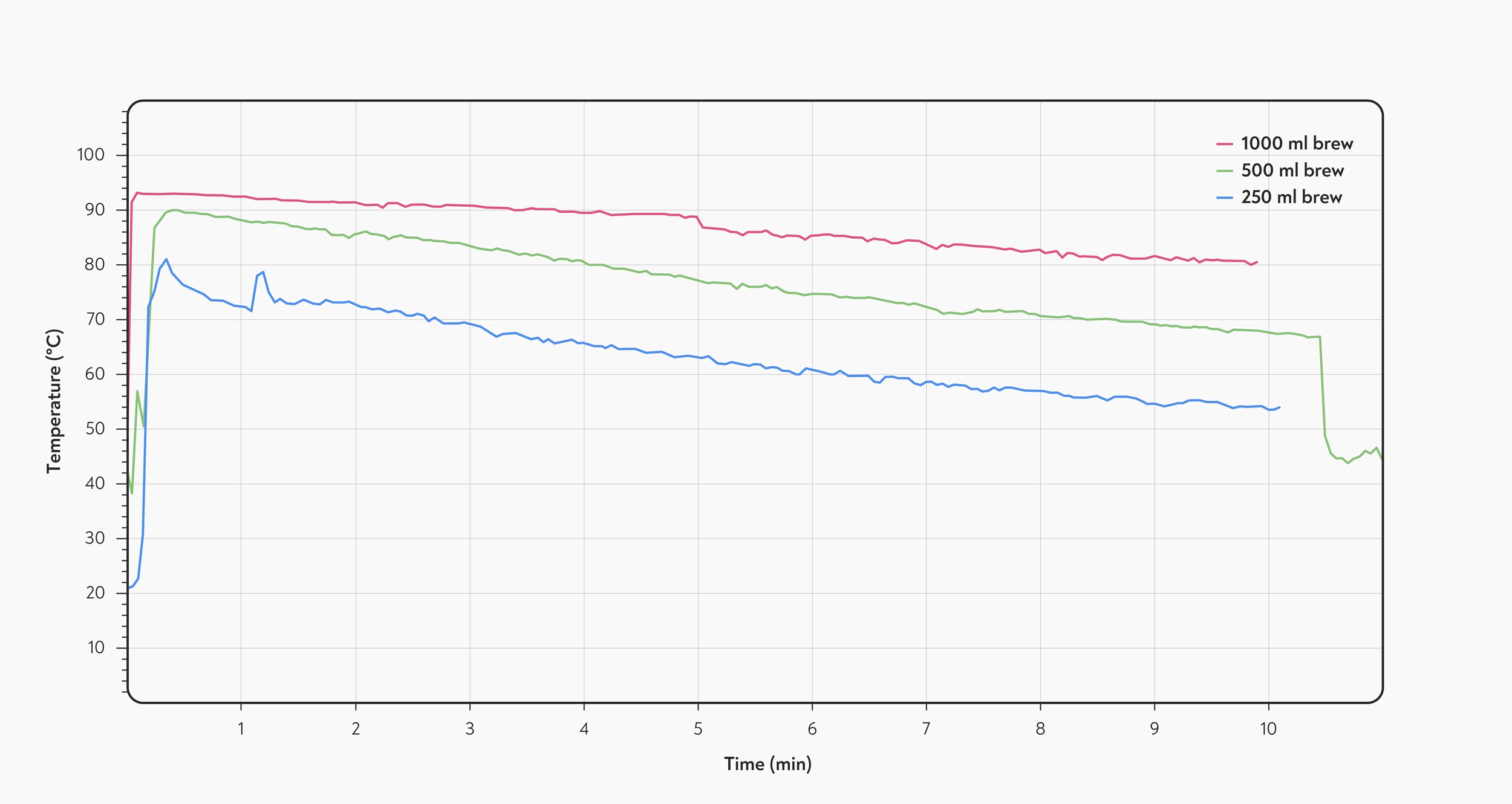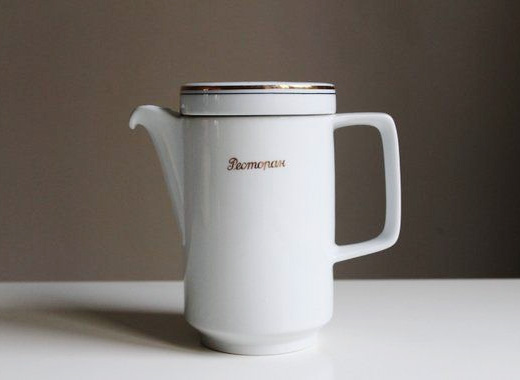‘Jug coffee’ describes coffee brewed in a way similar to a cupping, though generally on a much larger scale. This method of brewing coffee predates the French press and, according to the Encyclopedia of Domestic Economy (1855), it was the most common way of making coffee in England in the mid-nineteenth century. Its popularity no doubt comes from its absolute simplicity, as it requires no special brewing equipment — just a jug and a spoon.
One remarkable feature of the jug method is its scalability. We have achieved excellent results brewing very large quantities, sometimes as large as 5-litre batches; That’s twenty cups of hand-brewed coffee, prepared in no more time than it takes to make one pour-over. Please take extreme care when handling large quantities of hot water.
If you do up-scale your jug coffee (and this principle applies to French press coffee too) remember that larger brews lose their heat more slowly. In the graph below, you can see the temperature profile of three Jug coffees we tested which were brewed using the same water temperature, the same brew ratio, but with different volumes of water. You can see that the 1-L batch declined at a slower rate than the 500-ml batch. And the smallest brew, that was only prepared with 250ml of water cooled the quickest.
 A graph showing the temperature profile of three jug coffees prepared at different scales.
A graph showing the temperature profile of three jug coffees prepared at different scales.
Method
The method we suggest for jug coffee is almost identical to our French press recipe. However, the more you scale up the size of a jug coffee, the more slowly declining the temperature profile will be during the brewing process. That means larger brews will tend to reach higher extraction yields. To compensate for this, we tend to use a slightly coarser grind and a slightly cooler water temperature as we brew larger quantities.
When it is time to decant your brewed coffee from your jug,
